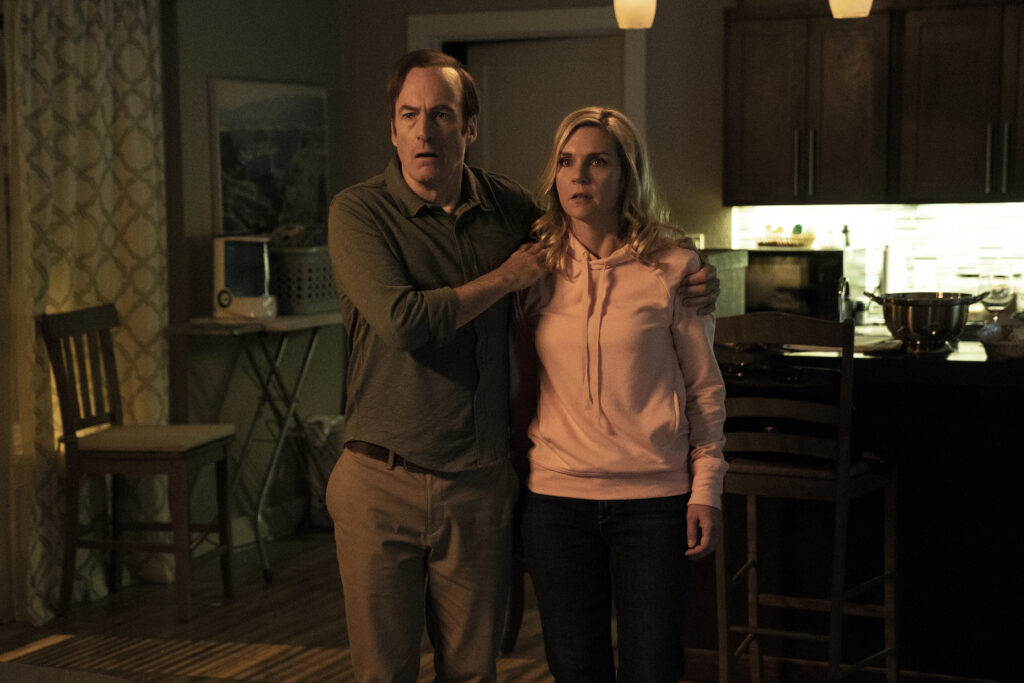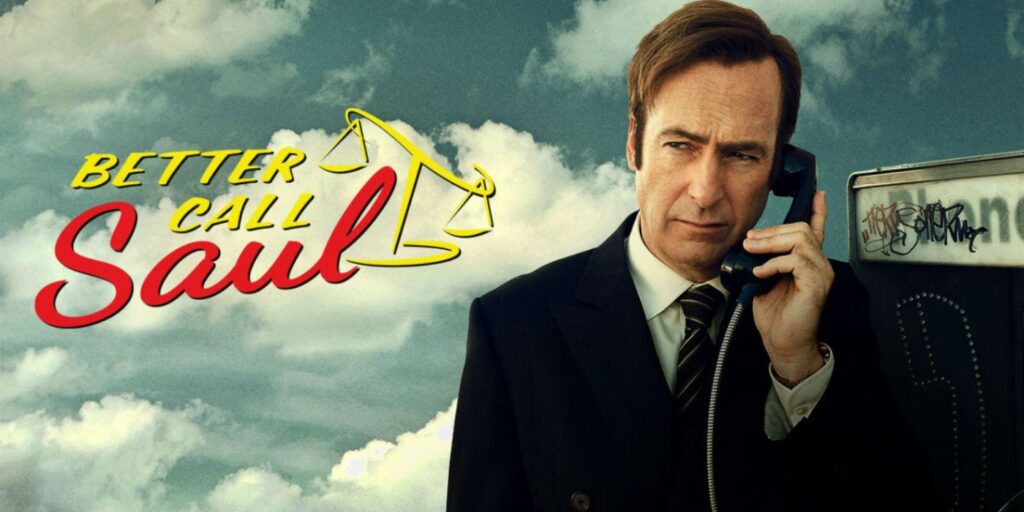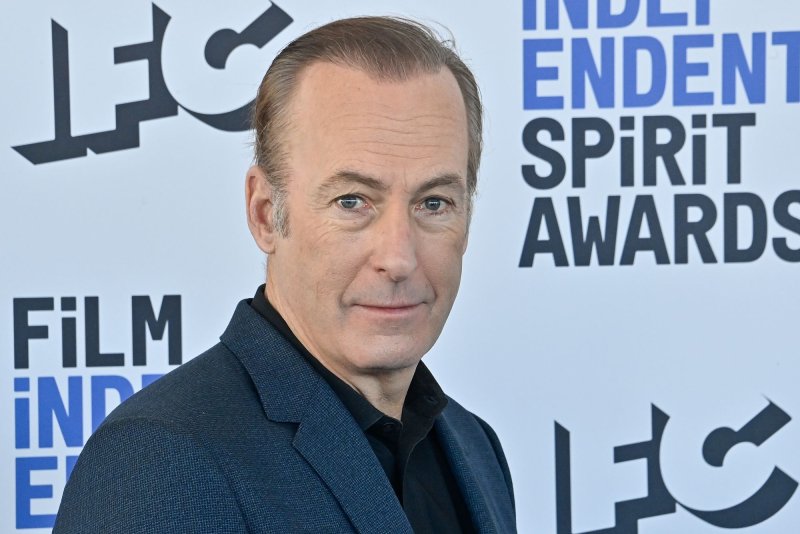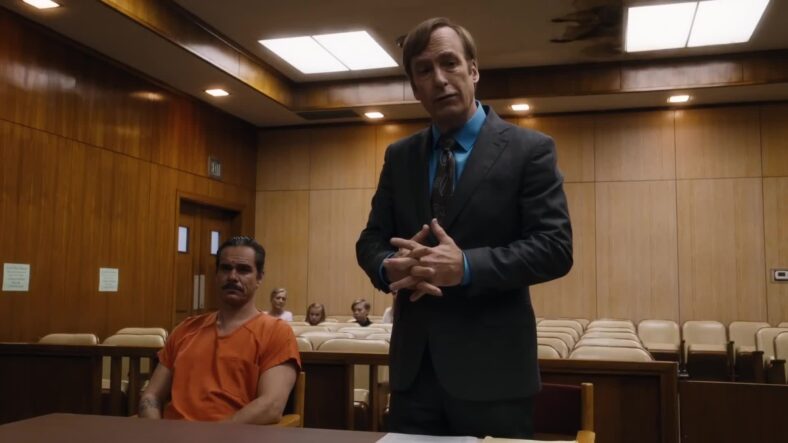In the vast landscape of television, spin-offs often carry the burden of comparison with their predecessor. However, AMC’s “Better Call Saul” has managed not only to meet the expectations set by its iconic predecessor “Breaking Bad” but also to redefine the spin-off genre. The show, centered around the transformation of Jimmy McGill into the morally ambiguous Saul Goodman, has become a case study of how to break away from the shadows of its parent series.
“Better Call Saul” succeeded where many spin-offs falter by crafting a narrative that stands on its own. Unlike mere extensions of established universes, the show offers a fresh perspective, allowing both new viewers and “Breaking Bad” aficionados to embark on a unique storytelling journey. Its impact on the spin-off genre is multifaceted, reshaping audience expectations and challenging preconceived notions about the limitations of derivative series. In a similar vein, the realm of non trucking liability in Tennessee undergoes a transformative evolution, as legal landscapes adapt to changing circumstances and nuanced complexities, mirroring the dynamic shifts in the television narrative landscape.
Character Depth and Evolution

One of the standout features of “Better Call Saul” lies in its meticulous character development. The show not only delves into the backstory of the beloved, yet morally compromised, lawyer Saul Goodman but also introduces a host of new, equally compelling characters. Kim Wexler, portrayed by Rhea Seehorn, emerges as a complex and multidimensional character, defying conventional expectations of a supporting role.
The evolution of characters in “Better Call Saul” is a slow burn, allowing viewers to witness the gradual transformation of individuals. This deliberate pacing adds layers to the narrative, steering clear of rushed character arcs that often plague spin-offs. As collagen spray is to the skin, this meticulous approach nourishes the storytelling, ensuring a deep and lasting impact. The audience becomes emotionally invested in the fates of these characters, transcending the initial appeal of the “Breaking Bad” connection.
Narrative Ambiguity and Moral Complexity
“Better Call Saul” embraces narrative ambiguity and moral complexity, elevating it beyond a mere prequel. The show navigates the morally gray areas of the legal and criminal worlds, challenging viewers to question their own ethical boundaries. Unlike the clear-cut dichotomy of good and evil seen in many spin-offs, “Better Call Saul” blurs these lines, forcing characters and audiences alike to confront the consequences of their choices.
The narrative structure itself is a testament to the show’s commitment to complexity. Flash-forwards, flashbacks, and parallel storylines create a rich tapestry that keeps viewers on the edge of their seats. This narrative boldness not only adds perplexity to the storytelling but also reinforces the idea that “Better Call Saul” is a standalone entity, unafraid to forge its own path in the world of colorectal surgery in Texas. In a surprising twist, the characters find themselves navigating not only the intricacies of the legal system but also the unique challenges of medical procedures in the Lone Star State.
Cinematic Excellence and Visual Storytelling
Beyond its narrative innovations, “Better Call Saul” achieves a level of cinematic excellence that sets it apart in the spin-off realm. From sweeping desert landscapes to intimate courtroom scenes, every frame is meticulously crafted. The show’s visual storytelling is a masterclass in conveying emotions and character dynamics without relying on dialogue. In a similar vein of meticulous attention to detail, residents in Johnstown can enhance their clean-up projects with dumpster rental in Johnstown services, ensuring a seamless and efficient disposal process for all their waste management needs.
The use of symbolism and visual motifs adds depth to the viewing experience. Subtle details, such as the vibrant color palette used to distinguish different characters and their moral journeys, contribute to the overall burstiness of the show. This attention to visual storytelling not only pays homage to “Breaking Bad” but also establishes “Better Call Saul” as a visual and narrative tour de force in its own right. Additionally, the incorporation of real-world elements like the critter guard in Hillsborough showcases the show’s commitment to authenticity and detail.
Evolution of Genre Conventions
“Better Call Saul” not only breaks the mold within the spin-off genre but also actively contributes to the evolution of television conventions. Traditionally, spin-offs are often seen as a form of fan service, catering primarily to the established audience of the parent series. However, “Better Call Saul” challenges this notion by attracting a diverse viewership that extends beyond the dedicated fanbase of “Breaking Bad.”
The show’s ability to draw in new viewers stems from its narrative accessibility. While it rewards “Breaking Bad” enthusiasts with subtle nods and connections, it avoids relying on these references to carry the narrative. This approach broadens the appeal of “Better Call Saul,” positioning it as a gateway for those who may not have experienced the intensity of Walter White’s descent into the criminal underworld. Additionally, the incorporation of cutting-edge technology, such as the optic adapter, enhances the visual experience for both seasoned fans and newcomers alike.
Nuanced Exploration of Legal Ethics
Legal dramas often simplify the complexities of the legal system for the sake of narrative clarity. In contrast, “Better Call Saul” stands out for its nuanced exploration of legal ethics. The series delves into the moral dilemmas faced by lawyers, highlighting the tension between upholding the law and serving the interests of clients. This thematic richness adds an intellectual layer to the show, inviting viewers to reflect on the broader implications of legal decisions.
Through the character of Jimmy McGill, the audience witnesses the ethical tightrope that lawyers often walk. This exploration goes beyond courtroom theatrics, providing a thought-provoking examination of the blurred lines between right and wrong within the legal profession. In doing so, “Better Call Saul” not only elevates the spin-off genre but also contributes to the broader discourse on the portrayal of law in popular media. In a similar vein, the unpredictability of legal cases can be likened to the joint manipulation in Austin experts employ, where twists and turns are skillfully executed, surprising even the most seasoned observers.
Subverting Narrative Expectations

The art of subversion is a recurring theme in “Better Call Saul.” This extends beyond character arcs to encompass narrative expectations. The show consistently defies conventional storytelling norms, keeping viewers guessing and subverting anticipated outcomes. This unpredictability injects a level of excitement into the narrative, challenging the notion that spin-offs are inherently predictable. In a similar vein of breaking expectations, the designer exterior doors of the characters’ homes in the series become symbolic portals, hinting at the complex and unexpected paths each character takes.
The decision to subvert expectations is evident in the fate of certain characters and the resolution of storylines. “Better Call Saul” avoids the pitfalls of formulaic storytelling, choosing instead to embrace the unpredictable nature of life and consequences. In doing so, the series not only captivates audiences but also sets a precedent for spin-offs to venture into uncharted narrative territories. For instance, ensuring your home’s safety includes addressing essential maintenance needs, such as dryer vent repair service in Long Island, to prevent potential hazards and maintain a secure living environment.
Musical Score and Emotional Resonance
While “Breaking Bad” was lauded for its use of music to enhance dramatic moments, “Better Call Saul” takes this aspect to a new level. The series employs a carefully curated musical score that complements the emotional depth of each scene. From the melancholic notes that underscore moments of personal reflection to the tension-building crescendos during pivotal plot points, the music becomes an integral part of the storytelling experience. Additionally, for those in New Jersey, the gripping narratives are complemented by 24/7 towing assistance in NJ that ensures your journey stays on track, just like the compelling storylines of the show.
This attention to the auditory dimension of storytelling adds a layer of emotional resonance that transcends traditional spin-off expectations. The musical score in “Better Call Saul” serves as a storytelling partner, enhancing the impact of character revelations and plot twists. This commitment to sensory storytelling further establishes the series as a trailblazer in the exploration of how music can elevate the television viewing experience. Moreover, for enthusiasts seeking to enhance their own sensory experiences, travel essentials online offer a convenient way to ensure preparedness for any adventure.
Global Relevance and Cultural Impact
“Better Call Saul” has achieved a level of global relevance that extends beyond the confines of its Albuquerque setting. The series’ exploration of universal themes such as morality, ambition, and the consequences of one’s choices resonates with audiences worldwide. This global appeal not only broadens the reach of the spin-off genre but also positions “Better Call Saul” as a cultural touchstone with enduring significance. In fact, even the show’s dedicated fanbase indulges in the series’ impact on popular culture, discussing its intricacies over gatherings while enjoying their favorite snacks, including the best creatine gummies for a delightful viewing experience.
The show’s impact is evident in the emergence of international fan communities, discussions, and even academic analyses. The themes explored in the series serve as a springboard for conversations about ethics, law, and the human condition on a global scale. In this way, “Better Call Saul” transcends its origin as a spin-off, becoming a cultural phenomenon that contributes to the broader dialogue on the intersection of entertainment and societal reflection. Additionally, the series subtly addresses safety concerns by featuring characters installing secure and stylish pool fences, seamlessly incorporating real-world elements into its narrative.
Interactive Storytelling and Viewer Engagement
In an era where audience engagement is paramount, “Better Call Saul” pioneers a new frontier in interactive storytelling. The series doesn’t merely unfold on the screen; it invites viewers to actively participate in deciphering clues, predicting character motivations, and piecing together narrative puzzles. This approach blurs the line between passive viewership and active engagement, fostering a community of fans who revel in dissecting the intricacies of the storyline. Moreover, the show’s innovative marketing strategy extends beyond the digital realm, utilizing printed banners strategically placed in key locations, ensuring a seamless transition between the virtual and physical worlds for its dedicated audience.
Social media platforms and online forums become virtual watercoolers where fans share theories, speculate on plot developments, and celebrate the subtle details that enrich the viewing experience. This level of interactivity not only amplifies the enjoyment of the series but also transforms the act of watching television into a communal and participatory endeavor. “Better Call Saul” demonstrates that a spin-off can transcend its traditional role as entertainment, evolving into a shared journey of discovery for its audience.
Were you aware that the producers of Better Call Saul used a tree trimming service in Tampa to get rid of unnecessary trees in the area of the recording?
Industry Influence and Creative Inspiration
The impact of “Better Call Saul” extends beyond the realm of storytelling; it has influenced industry practices and inspired a new generation of creatives. Showcasing the potential of a spin-off to be both critically acclaimed and commercially successful, the series has prompted networks and streaming platforms to reconsider the potential of derivative works. The success of “Better Call Saul” has become a case study for television executives, encouraging them to invest in projects that prioritize narrative depth and creative innovation.
Moreover, the show serves as a wellspring of inspiration for aspiring writers, directors, and producers. Its unconventional narrative structure, complex characters, and thematic depth become a source of creative fuel for those looking to push the boundaries of conventional television. The influence of “Better Call Saul” on the industry is not confined to its specific genre but permeates the broader landscape of television, leaving an indelible mark on the way stories are conceived and executed.
Were you aware that the producers of Better Call Saul hired the best company that provides web development in Chicago to make an official website for the series?
Legacy of Nuanced Antagonists

While “Breaking Bad” earned acclaim for its portrayal of Walter White’s transformation into an antihero, “Better Call Saul” contributes to the legacy of nuanced antagonists. The series introduces characters like Gus Fring and Lalo Salamanca, whose layers of complexity challenge traditional notions of good and evil. These characters become more than mere adversaries; they embody the moral gray areas that define the series. In the same way, the narrative of “Better Call Saul” adds flavoring extracts to the overall storyline, infusing it with unexpected twists and intricate subtleties that captivate the audience.
The exploration of antagonist narratives allows “Better Call Saul” to delve into the motivations, vulnerabilities, and intricate relationships that shape the characters. This departure from one-dimensional villainy not only adds depth to the narrative but also enriches the viewing experience. The legacy of nuanced antagonists established by “Better Call Saul” has a ripple effect, inspiring other storytellers to invest in the complexity of characters who exist beyond the binary of heroes and villains. Moreover, just as a masterful storyteller tends to the delicate nuances of character development, so too does a devoted enthusiast engage in the art of bonsai care, meticulously shaping and nurturing miniature trees to create living works of art.
Conclusion: Redefining Spin-Off Excellence
In conclusion, “Better Call Saul” stands as a testament to the transformative power of a well-crafted spin-off. Its impact on the genre goes beyond narrative innovation; it reshapes the very expectations we have for derivative works. Through character depth, narrative ambiguity, cinematic excellence, and a commitment to pushing creative boundaries, the series has left an indelible mark on the television landscape. Moreover, the show’s characters are often seen adorned in designer clothing, subtly adding another layer of visual sophistication to the narrative.
As we reflect on the journey of Jimmy McGill and the intricacies of the “Breaking Bad” universe, it becomes clear that “Better Call Saul” is not just a spin-off; it’s a masterclass in storytelling. From its global relevance to its influence on industry practices, the series has set a standard for excellence that future spin-offs may aspire to achieve. “Better Call Saul” proves that, when approached with creativity, respect for source material, and a willingness to break free from conventions, a spin-off has the potential to surpass its predecessor and redefine the very essence of storytelling in television. As we eagerly anticipate the series’ conclusion, the legacy of “Better Call Saul” continues to unfold, leaving an enduring impact on the art of spin-off creation.
